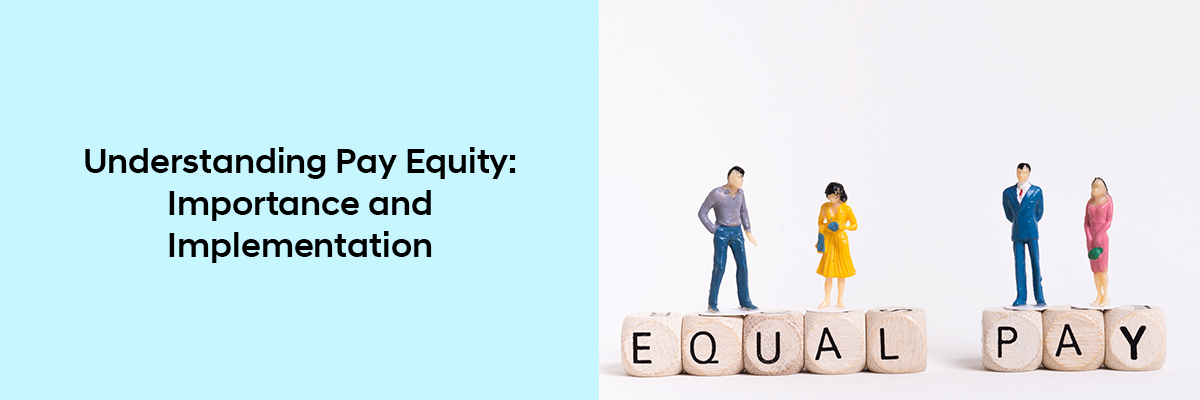In today’s evolving workplace, pay equity is no longer just a buzzword, it’s a compliance requirement and a vital element of a fair and inclusive organizational culture. As regulatory scrutiny intensifies and employee awareness grows, ensuring pay equity has become a top priority for HR and compliance professionals. But what exactly does pay equity mean, why is it so important, and how can organizations implement it effectively?



What is Pay Equity?
Pay equity refers to the concept of compensating employees equally for work of equal value, regardless of gender, race, ethnicity, or other protected characteristics. It ensures that compensation decisions are based on job-related factors such as skills, experience, and performance, rather than discriminatory criteria.
It’s important to note that equal pay is not the same as identical pay. Two employees may have different salaries based on legitimate factors like tenure or education, but these differences must be fair, transparent, and consistently applied.
Why is Pay Equity Important?
1. Legal Compliance
One of the primary drivers of pay equity is legal compliance. Numerous laws mandate equal pay, including:
- The Equal Pay Act of 1963
- Title VII of the Civil Rights Act
- Lilly Ledbetter Fair Pay Act
- State-specific legislation like California’s Fair Pay Act
Failure to comply with these regulations can lead to lawsuits, penalties, and reputational damage.
2. Employee Morale and Retention
When employees perceive that they are being paid fairly, it fosters trust and loyalty. Conversely, pay inequity can lead to disengagement, lower productivity, and higher turnover, particularly among women and minority groups.
3. Attracting Top Talent
Job seekers today are more informed and value transparency. Companies known for equitable pay practices gain a competitive edge in attracting diverse, high-quality talent.
4. Brand Reputation
Organizations committed to pay equity are seen as ethical and forward-thinking. Public commitments to closing pay gaps can boost an organization’s image with customers, investors, and potential employees.
Steps to Implement Pay Equity in Your Organization
Successfully implementing pay equity requires a multi-step, data-driven approach. Here’s a step-by-step guide for compliance professionals and HR leaders:
1. Conduct a Pay Equity Audit
Start by analyzing current compensation data. Break it down by gender, race, and other protected categories. Compare pay across similar roles and levels of experience to identify disparities.
Use third-party auditors or pay equity software tools for unbiased analysis.
2. Establish Clear Compensation Policies
Develop standardized salary ranges for each role and level. Define the criteria that influence pay decisions, such as education, certifications, experience, and performance.
Clear policies prevent subjective decisions that can lead to unconscious bias.
3. Train Managers and HR Teams
Educate managers on equitable compensation practices and the legal implications of non-compliance. Regular training helps reduce unconscious bias during hiring, promotion, and salary negotiations.
4. Address Identified Disparities
If discrepancies are found, take action. This might include adjusting salaries, revising job descriptions, or restructuring bonus schemes.
Make it a priority to fix issues rather than waiting for employees to raise concerns.
5. Promote Pay Transparency
While complete transparency may not be feasible for all organizations, providing employees with clear information about pay ranges, promotion paths, and evaluation criteria builds trust.
Some companies have taken the lead by publishing pay gap data and setting measurable goals to close disparities.
6. Monitor and Review Regularly
Pay equity is not a one-time project. Set up a recurring schedule to re-evaluate compensation practices and track progress toward equity goals. Changes in workforce composition, market rates, or organizational structure may affect pay dynamics over time.
Common Challenges and How to Overcome Them
Data Limitations
Solution: Invest in robust HRIS (Human Resource Information Systems) that allow detailed and accurate reporting. Ensure demographic data is collected in a secure and compliant manner.
Unconscious Bias
Solution: Implement blind recruitment practices and conduct bias training regularly. Consider structured interviews and objective performance metrics.
Resistance to Change
Solution: Engage leadership by presenting the business case for pay equity. Highlight legal risks, financial impacts, and cultural benefits.
Pay Equity Trends in 2025
- AI-Powered Pay Equity Tools: More companies are leveraging artificial intelligence to detect and address pay disparities in real time.
- Pay Transparency Laws: States like California, Colorado, and New York are introducing regulations that require employers to disclose pay ranges in job postings.
- Global Focus on Equity: Multinational corporations are now integrating global pay equity strategies as ESG (Environmental, Social, and Governance) reporting becomes mainstream.
We help HR and compliance leaders stay ahead of regulatory changes and implement practical solutions for building fair, inclusive workplaces. Learn more about our training programs, webinars, and compliance resources on pay equity and beyond.
Final Thoughts
Ensuring pay equity is not just a legal obligation, it’s a moral imperative and a strategic advantage. For compliance professionals, this means moving beyond the basics of equal pay laws and embedding equity into the very fabric of organizational culture.


